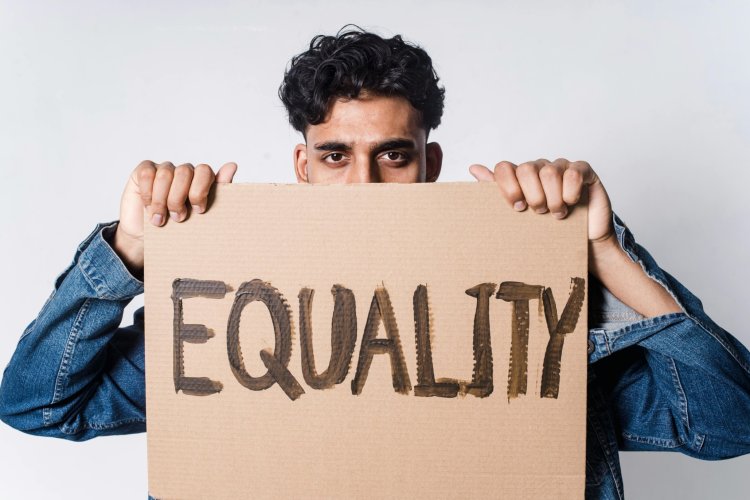Understanding Traditional Relationship Roles: A Gender-Roles Guide
Explore the evolution of traditional relationship roles, their cultural significance, and how they continue to shape modern partnerships while promoting more balanced and equitable dynamics.

The question of traditional relationship roles has sparked much discussion and inquiry for quite some time. How partners engage, divide up tasks, and provide mutual support has been defined by these roles, which have their origins in cultural and historical traditions. Understanding historic relationship roles gives vital insights into the functioning of relationships and how they continue to impact current partnerships, even as modern relationships are moving towards more egalitarian dynamics.
What Are Traditional Relationship Roles?
In a traditional partnership, each partner is expected to fulfill a certain duty, usually dictated by their gender. Traditional gender roles in the home and community had their roots in religious, cultural, and historical norms that dictated men's and women's responsibilities.

Historical Context of Traditional Relationship Roles
Pre-Industrial Society: Physical ability and basic need dictated social stratification in agrarian communities. Traditionally, men have played the roles of hunter-gatherers and defenders, while women have taken on the roles of nurturers and home managers.
Industrial Revolution: When industrialization began, most men left the house to work and provide for their families, while women stayed at home to take care of the house. During this time, the traditional roles of men as breadwinners and women as housewives were firmly established.
Post-World War II Era: Particularly in Western countries, the ideal family unit throughout the 1950s and 1960s typically consisted of a working father and a stay-at-home mother, reinforcing established roles.
Common Traditional Roles for Men and Women
Men
- Provider: The main breadwinners in most families were traditionally considered to be men.
- Protector: It was traditionally anticipated that men would shield their families from emotional and physical violence.
- Decision-Maker: Decisions about the family's finances and discipline were usually determined by the male head of the home.
Women
- Homemaker: Household chores, such as cooking and cleaning, were traditionally performed by women.
- Caretaker: Women typically took on the responsibility of caring for and raising children.
- Supporter: To make sure their families were okay, women gave emotional support to their spouses and kids.
Cultural Variations in Traditional Roles
Cultural differences can manifest in a wide range of traditional relationship roles. To illustrate:
- Western Cultures: Highlighted the importance of traditional nuclear families with established gender roles.
- Eastern Cultures: There was a strong emphasis on maintaining vast family networks, with women playing an essential role in this sphere.
- Indigenous Cultures: More often than not, they displayed more egalitarian behaviors, wherein men and women divided up tasks according to communal needs rather than rigid gender norms.
The Evolution of Relationship Roles
Women's Liberation Movement: Feminism, which fought for women's rights and questioned traditional gender roles, emerged in the 1960s and 1970s, bringing about profound social upheaval.
- Economic Changes: Additional women are joining the workforce and males are taking on additional domestic responsibilities as a result of the rise of dual-income households.
- Legislation: The development of conventional gender roles has been impacted by anti-discrimination and equal pay legislation.
Traditional Relationship Roles and Their Drawbacks
Following are some of the most notable traditional gender roles along with their respective drawbacks.

Men as Breadwinners
This idea that males should be the breadwinners of the family is strongly rooted in many cultures and traditional roles. Because of this expectation, males are under a lot of pressure to give financially, which can make them neglect their health and their ability to strike a healthy work-life balance.
Because males may begin to believe that their value is directly proportional to their income, this can cause them unnecessary stress and burnout. Conversely, this role discourages women from pursuing economic possibilities outside the house and reinforces the stereotype that women should stay at home and take care of the children. This could cause women to have less financial freedom and salary discrepancies between the sexes as a result of obstacles to professional advancement.
Women as Homemakers
Household tasks and child-rearing are usually seen as responsibilities that fall on women. Although these responsibilities are essential, women may feel constrained in their professional advancement because of the notion that they should put them first.
Women may feel pressured to sacrifice their professional goals and family obligations due to this traditional role, which can limit their job chances and personal growth. Furthermore, women's substantial contributions to the home are undervalued due to the absence of acknowledgment and monetary remuneration for housekeeping labor.
Chivalrous Men
The idea that women are frail and in need of protection is reinforced when males are expected to take on that role. Although men mean well when they open doors or help women carry heavy objects, these acts of chivalry perpetuate the stereotype that women are weaker and less capable than men.
This has the potential to diminish women's self-assurance and autonomy. guys suffer from suppressed emotions and mental health problems because damaging masculine ideals like "men don't cry" and "show vulnerability" are perpetuated.
Job Selection
Gender norms dictate that men should pursue physically hard occupations like engineering or construction, while women should pursue more caring occupations like teaching or nursing. Gender segregation in the workplace is reinforced and individual career goals are curbed by this separation.
While males in traditionally male-dominated occupations may encounter prejudice and sexism, women in traditionally female-dominated industries may confront sexism and other forms of discrimination. Because of these preconceptions, fewer people are able to realize their full potential in work that is a good fit for their interests and abilities.
Behavioral Norms
Men are expected to be strong and aggressive, while women are expected to be submissive and kind, according to societal norms. Both sexes are constrained in their emotional expression and personal growth by these behavioral standards. Problems like elevated stress levels and mental health issues might arise because males may have difficulty showing vulnerability or asking for assistance.
Assertive women may unjustly be characterized as aggressive or domineering, and males who show signs of weakness may be characterized as weak when they act in a nurturing manner. The evolution of a more accepting and emotionally intelligent community is impeded by such inflexible standards, which also limit individual development.
Nurture vs. Discipline
The uneven dynamics of parenting are typically a result of traditional roles, which portray men as disciplinarians and women as main caregivers. Due to this division, women may end up taking on the bulk of childcare duties, which can be taxing and leave little room for their careers and personal lives.
On the other hand, dads might not have the chance to bond with their kids on a deep, caring level. Children thrive emotionally when they observe both parents actively caring for and correcting them, therefore these imbalances can have a negative impact on their development.
Clothing Styles
Men and women are expected to dress differently according to traditional norms, which reinforces gender differences from an early age. Babies are typically dressed in pink for females and blue for boys. Typical gender roles for boys and girls persist until childhood, with the former being expected to wear pants and the latter to wear dresses.
It can be challenging for individuals to discover and establish their own identities apart from cultural norms when there are strict regulations that restrict self-expression and perpetuate gender stereotypes.
Children’s Toys
Typically, toys are handed out to youngsters based on their gender from an early age, with boys receiving construction sets and cars and girls receiving dolls and play kitchens. This influences future job decisions and interests by reinforcing gender-specific talents.
While females may be more interested in playing house and caring for others with dolls and kitchen sets, boys may find more success with building and construction toys that encourage them to use their imaginations and solve problems. Both boys and girls can be stifled in their ability to develop a diverse set of interests and abilities due to these formative events.
Housewife
Limiting women's independence and job aspirations is the idea that they should remain at home and take care of the household while men work. It can be challenging for women to escape violent or unfulfilling relationships when they are economically dependent on their male partners, which is often a result of this traditional role.
The substantial contributions women make to the welfare of their families and society as a whole are overlooked and undervalued due to the nature of the homemaking job. To empower women and foster more egalitarian partnerships, it is important to promote a more balanced division of family chores.
Hobby Expectations
The kinds of pastimes and interests that men and women are expected to pursue are frequently dictated by traditional gender norms. While women are encouraged to engage in more sedentary pursuits like knitting or cooking, men are expected to participate in sports and physical activities like football or golf.
These norms prevent people from pursuing their passions and further entrench gender stereotypes. One way to combat these biases and foster an environment where people of all genders can follow their passions is to encourage a more accepting attitude toward hobbies.
Personality Traits
Gender norms tend to foster certain personality traits, such as men's extroversion and confidence and women's amiability and nurturing. Some people may see men who display characteristics often associated with femininity as weak, while others may view women who express characteristics typically associated with masculinity as aggressive.
This duality hinders people's ability to cultivate a complete spectrum of character traits and express themselves honestly. People can develop their own qualities free from the limitations of societal expectations when they challenge these stereotypes, which can lead to healthier and more balanced expressions of personality.
Moving Towards a Balanced Approach
Many contemporary couples are looking for a more nuanced approach, even though conventional roles do have their place in culture and history. What this entails,
- Open Communication: Having frank discussions about roles and duties helps make sure each spouse feels heard and appreciated.
- Flexibility: Deviating from traditional gender roles in accordance with personal qualities, tastes, and life events.
Equality and mutual respect can be fostered through shared responsibilities, such as encouraging both partners to divide up domestic and financial tasks.
Conclusion
The roles that people play in traditional relationships reveal a lot about a society's culture and history. Although these roles have changed and will change in the future, couples can benefit from a better grasp of their history and what it means for their relationships if they do their research.
In today's ever-changing environment, partnerships may thrive and be more fair when people are willing to be flexible, communicate openly, and share the load.
Share
What's Your Reaction?
 Like
0
Like
0
 Dislike
0
Dislike
0
 Love
0
Love
0
 Funny
0
Funny
0
 Angry
0
Angry
0
 Sad
0
Sad
0
 Wow
0
Wow
0














